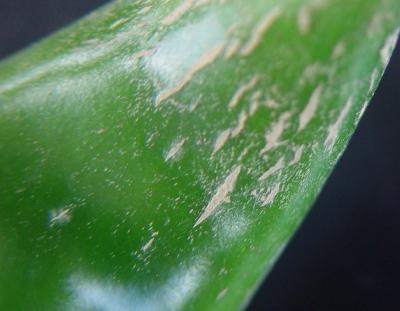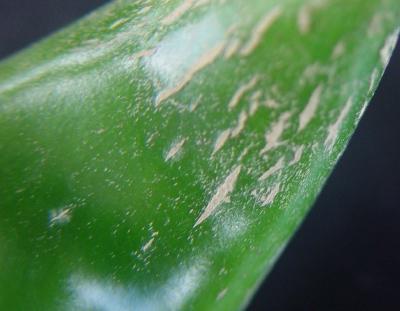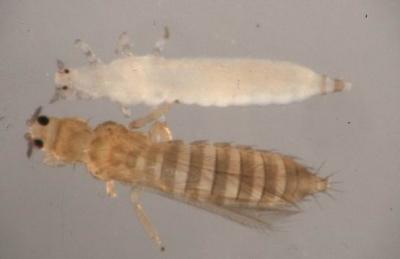


(Some species of Haplothrips are reported as pest in South Africa, we do not know if they are pests in Kenya or east Africa. Haplothrips are present in East Africa, but some of them are beneficial (predacious) and we do not know the status on the region. This will have to be reviewed when we finish with the datasheets). [br] When the status of Haplothrips in East Africa has been clarified we could decided if we leave this information on egg-laying habits. [br] Biological pesticides: check with list of Seif [br] FW: Include information on synthetic pesticides?
Thrips (<i>Frankliniella</i> spp., <i>Scirtothrips dorsalis, Thrips tabaci</i>)
Thrips usually feed on all above ground parts of plants, preferring the underside of young leaves, flowers and fruits. Often they are concealed under the calyx. Plant damage results from thrips puncturing leaves and sucking the exuding sap. At the initial stage of infestation leaves have a silvery sheen and show small, dark spots of faecal material on the underside. When the attack increase leaves curl upward, wrinkle and finally dry up. This may predispose fruits to sunscald.
Heavy feeding damage turns leaves, buds and fruits bronze in colour. It may cause wilting, retardation of leaf development and distortion of young shoots resulting in stunted plants. Attack on fruits causes deformation and scarring (manifested as brown lines) of the fruits making them unmarketable, especially fruits for the export market. Thrips attack at the seedling and early stages of the crop delays crop development. Thrips transmit the tomato spotted wilt virus in peppers. S. dorsalis transmits the leaf curl disease of chillies.
- Natural enemies of thrips are important for natural control. Main natural enemies include anthocorid bugs (Orius spp.) predatory mites and spiders.
